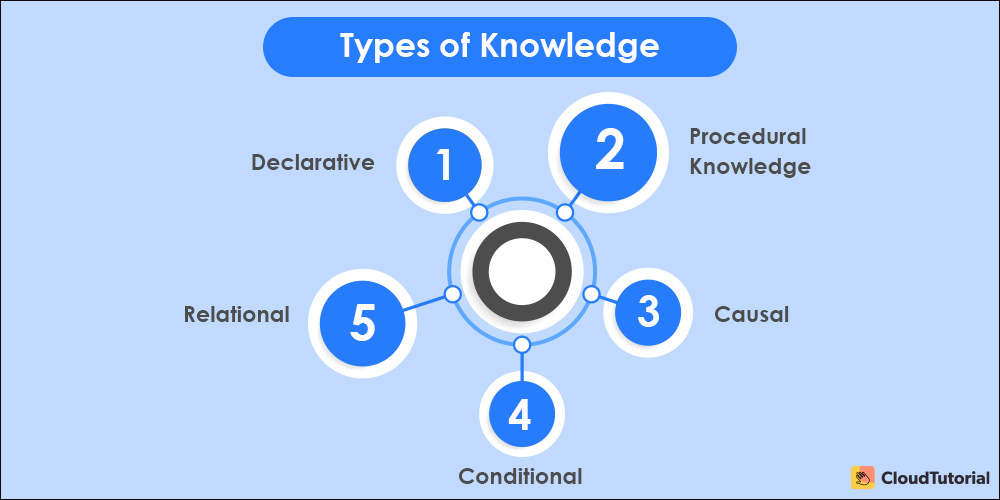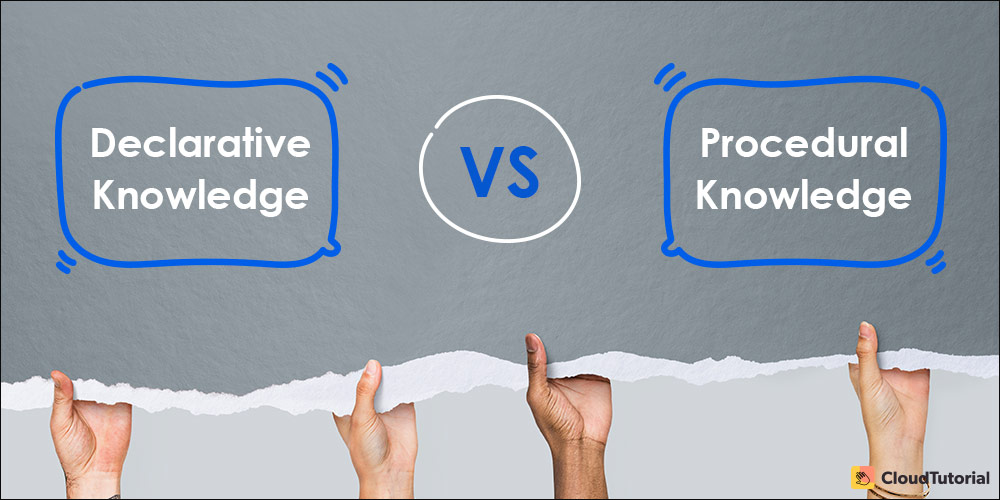Knowledge is the foundational block of human development. But do we fathom what actual knowledge is and how to use it for the betterment of society?
Knowledge is the most critical resource in modern times, and yet there’s so much we don’t understand about it. Knowledge is a mixture of experience, values, content information, and expert insights and data that form the framework for incorporating new information.
This article will discuss the role of knowledge management systems, particularly declarative knowledge, and the set of processes that help in the assimilation, expansion, and use of knowledge.
Table of Content
Having realized that knowledge is an essential resource in the development of human society, it is necessary to build this framework and understand its fundamentals.
In an organizational setup, knowledge is embodied in documents and organizational routines, practices, and norms. Management of this knowledge is a critical part of an institution’s overall development. This is where knowledge management comes in.
It is defined as a set of processes that help in the assimilation, expansion, and use of knowledge. Transfer of knowledge from one entity to another thus involves the process of seeking, organizing, and using relevant data to help resolve problems.
To efficiently classify knowledge under well-defined verticals is very important as it helps the transfer of knowledge.
What is Declarative Knowledge?
One such vertical that is defined is declarative knowledge. It refers to static facts or information stored in a database. This information can be conceptual, propositional, or even descriptive knowledge that describes subjects, things, events, outcomes, and their attributes about each other.
Declarative knowledge can be thought of as information about various categories of facts, such as world history, mathematical operations, and so forth.
Different Types of Knowledge

Declarative
Referred to as the know-what data about someone or something. This category of knowledge and information thus is, in essence, an accumulation of facts.
Procedural Knowledge
It is referred to as the know-how data about abilities to do something. This (purely procedural) knowledge base is essentially developed and retained within organizations and institutions—for example, the research-based efforts (perform task and analysis) of the Research & Development team within an organization.
Causal
It is referred to as the know-why data and accounts for principles and laws of nature that govern human society and the development and advancement of technology. Such knowledge can also be acquired by reading books, magazines, attending lectures, adopting databases, and helps to exercise critical thinking and minimize technological errors.
Conditional
It is referred to as the know-when data and helps in decision making. The underlying knowledge is acquired from prior experiences.
Relational
It is referred to as the know-who, know-where data, which includes information about what data is stored. This knowledge transfer is essential in institutions as employees have to know where a particular data type is stored and can be referenced. Such knowledge is thus challenging to transfer among employees.

Want To Create A Knowledge Base For Your Company?
Adopt CloudTutorial that is a leading KB software, allowing you to create a knowledge platform in real-time to maintain information.
What Are Some Examples of Declarative Knowledge?
As stated above, declarative knowledge is the accumulation of facts and thus, many a time refers to questions, which have boolean answers that are true or false responses. Additionally, declarative knowledge can be easily communicated from one individual to another.
Declarative knowledge in itself is further divided into two types – factual and conceptual understanding.
Factual Knowledge
Basic information that is well-established facts constitutes this category of declarative knowledge.
For example, the knowledge of terminology or the understanding of unique details and elements is, in essence, declarative knowledge.
Conceptual Knowledge
Interrelationship of information between essential elements within a broader knowledge framework is also categorized as conceptual knowledge or understanding.
For example, the knowledge of classification and categorization, knowledge of principles and generalization, the knowledge of theories, models, and structures all come under declarative knowledge.
Some real-life declarative knowledge examples include –
- The fact that the radius of the earth is about 6500 km is a matter of fact and an example of declarative knowledge.
- The fact that ice is less dense than liquid water is an example of declarative knowledge.
- Knowing that 2 + 2 = 4 is a form of declarative knowledge.
How to Capture Declarative Knowledge With Knowledge Management?
Knowledge management, however, is a long process and requires the efficient use of technology i.e., knowledge base system. The following are some practices that can be employed to facilitate declarative knowledge transfer.
Identify Knowledge Metrics To Focus On
As mentioned above, knowledge management is composed of two forms of knowledge- factual and conceptual.
As an organization, your tasks include managing these metrics and providing the most relevant data to the customer. This is because two similar businesses operating in the same niche can have vastly different knowledge sets that ultimately affect how each company goes about its business.
Proper Definition Of How Knowledge Is Created And Stored
Once you’ve identified these knowledge metrics, you need to define how this information is going to be stored. Again, it is essential to note that factual declarative knowledge is much easier to define, communicate, and keep.
Creation of data may include tutorial videos that demonstrate the particular feature of your product is an efficient way to provide value to your customer. Thus, whether you’re creating text articles or video-based content, there are a variety of knowledge management tools and software at your disposal.
Knowledge base software like that of CloudTutorial allows you to store knowledge and content in a centralized database accessible by internal team members and customers.
The knowledge and information must be created and circulated in the most efficient way possible and such that the accessibility of the data is guaranteed to everyone within the organization. Knowledge bases are the best method to ensure that.
Make The Best Use Of Declarative Knowledge With CloudTutorial
Declarative knowledge is not of much value when the data is simply stored as a disjointed collection of facts and information. Instead, the data must be categorized and organized into a functional structure that can be referenced for reasoning and learning about a subject to a large extent. This categorization of data and information is referred to as an ontology.
An efficient knowledge base system like that provided by CloudTutorial serves as a suitable method that can be used to incorporate new related concepts and data points within a business framework.
CloudTutorial helps you create an SEO-friendly knowledge base without any use of coding. Additionally, it allows you to integrate drag and drop questions, articles, and files from one category to another.
What is the Difference Between Declarative and Procedural Knowledge?

To address how declarative and procedural knowledge differ from each other, here are some essential pointers –
| Declarative Knowledge | Procedural Knowledge |
|---|---|
|
|
|
|
|
|

Decided To Start Using CloudTutorial Software Now?
Trusted by various businesses, CloudTutorial is the best knowledge base platform to create, manage and organize company information.
A similarity between declarative and procedural knowledge is that procedural knowledge is based on declarative knowledge. Both of these knowledge learning processes go through an initial cognitive stage wherein rules and information are learned.
This information is then developed through associative learning processes, during which one knows how to apply the information/skills gained, create associations and reach a result achieved using this accumulated knowledge.
Declarative memory is simply an extension of declarative knowledge and refers to the memory of facts, data, and events. An example of this is remembering that your favorite restaurant is open only until 8 PM on Sundays. The fact that you can consciously recall the timing of the restaurant is known as declarative memory.
Well-established facts like important dates in world history, rules for mathematical equations, and so forth are all examples of declarative knowledge. On the other hand, all facts of explicit knowledge, meaning that you are consciously aware of the data, are examples of declarative knowledge.
Jira Declarative knowledge helps learners to make sense of new situations through explanations based on factual data. Thus, it combines both practice and explanation and is critical to developing practical solutions to problems.
Declarative knowledge comprises numerous knowledge sets consisting of well-known facts. Procedural knowledge, on the other hand, encompasses a series of cause-and-effect observations. For example, procedural knowledge involves knowing how to ride a bike, something that we just know intrinsically but may not be able to explain.
Thus, declarative knowledge transmission within the organization and with your customers is critical for the success of your business. Knowledge base systems supporting microlearning features, such as online lectures, infographics, and tutorials are critical to the cause.
Being a business owner, if you have decided to create a knowledge base platform for your business, CloudTutorial is a standalone KB software, offering a range of exclusive features, such as fully customized, categories & subcategories options, custom domain, and more.
Try it out before you decide.
Create a test article NOW!
Using this tool, all you have to do is add your first test article and see how it looks. Now, you don’t have to sign-up or login into CloudTutorial software just to check how your first article appears.

